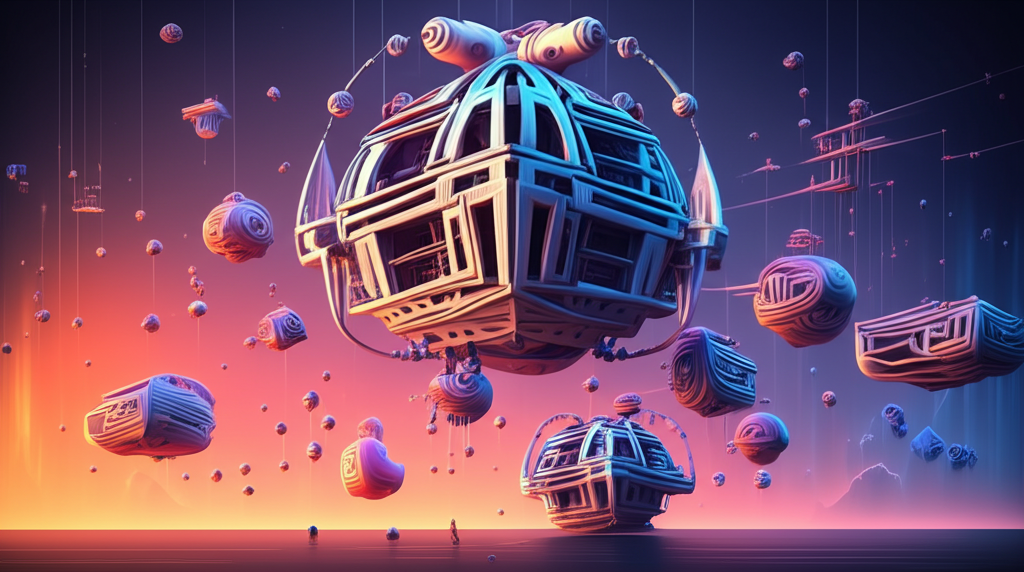The Generative AI Revolution: Beyond the Hype
TheSeedofStory.com
AI Storytelling

The Generative AI Revolution: Beyond the Hype
Generative AI has captured the public imagination like few technologies before it. From text-to-image models that create stunning artwork to large language models that can write essays and code, these systems represent a significant leap in artificial intelligence capabilities. But beyond the headlines and viral demos, what real impact is generative AI having, and where is it headed?
The Current Landscape
The past few years have seen remarkable advances in generative AI across multiple domains:
Text Generation
Large Language Models (LLMs) like GPT-4, Claude, and Llama have demonstrated increasingly sophisticated abilities to:
- Generate human-quality text across diverse styles and formats
- Answer questions with nuance and depth
- Translate between languages with high accuracy
- Summarize complex documents
- Write functional code from natural language descriptions
These capabilities are being integrated into products ranging from writing assistants to customer service bots to programming tools.
Image Generation
Models like DALL-E, Midjourney, and Stable Diffusion have revolutionized visual creation by:
- Generating photorealistic images from text descriptions
- Creating artistic renderings in specific styles
- Editing and modifying existing images
- Extending images beyond their original boundaries
- Converting rough sketches into detailed illustrations
These tools are finding applications in design, advertising, entertainment, and personal creative expression.
Audio and Video Generation
The newest frontier includes models that can:
- Generate realistic human voices and speech
- Create music in various styles
- Synthesize video from text prompts
- Animate still images
- Generate 3D assets from descriptions
While less mature than text and image generation, these technologies are advancing rapidly.
Real-World Impact
Beyond the demos and social media posts, generative AI is beginning to transform industries:
Creative Industries
- Design: Accelerating ideation and prototyping processes
- Advertising: Enabling rapid creation of customized marketing materials
- Entertainment: Assisting with scriptwriting, concept art, and special effects
- Gaming: Generating game assets and even dynamic content
Business Operations
- Customer Service: Powering more capable and natural-sounding support systems
- Content Creation: Automating routine writing tasks like reports and product descriptions
- Data Analysis: Generating insights and summaries from complex datasets
- Software Development: Accelerating coding through AI pair programming
Education and Research
- Personalized Learning: Creating customized educational content
- Research Assistance: Summarizing literature and generating hypotheses
- Accessibility: Making content creation possible for those with disabilities
Challenges and Limitations
Despite impressive capabilities, generative AI faces significant challenges:
Technical Limitations
- Hallucinations: AI models frequently generate plausible-sounding but factually incorrect information
- Context Windows: Limited ability to process very long contexts
- Reasoning: Struggles with complex logical reasoning and mathematical problem-solving
- Multimodal Integration: Still developing the ability to reason across text, images, and other modalities
Ethical and Societal Concerns
- Copyright and Ownership: Questions about the rights to AI-generated content and the use of copyrighted material in training
- Misinformation: Potential for generating convincing fake content at scale
- Labor Displacement: Concerns about job impacts in creative and knowledge work
- Bias and Representation: Risks of perpetuating harmful stereotypes or underrepresenting certain groups
The Path Forward
The future of generative AI will likely be shaped by several key developments:
Technical Evolution
- Multimodal Models: Increasingly seamless integration across text, image, audio, and video
- Reasoning Capabilities: Enhanced logical and mathematical reasoning
- Memory and Context: Expanded ability to maintain context over longer interactions
- Efficiency: More powerful models that require less computational resources
Emerging Applications
- Personalized Education: AI tutors that adapt to individual learning styles
- Healthcare: Generating treatment plans and medical documentation
- Scientific Discovery: Accelerating research in drug discovery and materials science
- Digital Humans: More sophisticated virtual beings for entertainment and assistance
Governance and Standards
- Watermarking and Provenance: Technical solutions to track AI-generated content
- Ethical Guidelines: Industry standards for responsible development and deployment
- Regulatory Frameworks: Government policies to address copyright, liability, and safety concerns
Conclusion
The generative AI revolution represents a fundamental shift in how we create and interact with digital content. While the technology is still evolving, its impact is already being felt across industries and creative disciplines.
The most transformative applications will likely come not from replacing human creativity but from new forms of human-AI collaboration—tools that amplify human capabilities and open new possibilities for expression and problem-solving.
As we navigate this transition, thoughtful consideration of both the opportunities and challenges will be essential. The choices made by developers, businesses, policymakers, and users will collectively determine whether generative AI fulfills its potential as a tool for human empowerment and creative expansion.
TheSeedofStory.com
AI Storytelling
Visit TheSeedofStory.com →Expert in artificial intelligence and quantum computing with a passion for making complex technologies accessible to everyone.